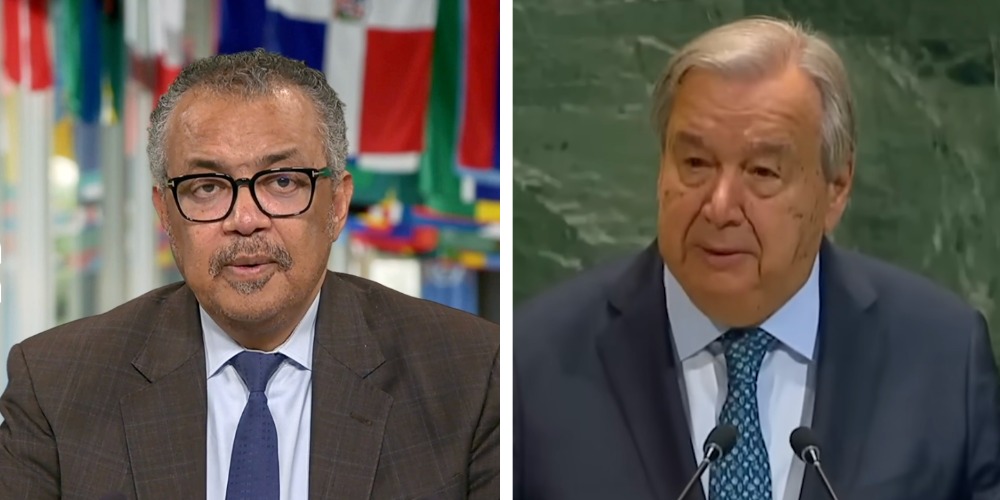However, the Biden-Harris administration recently did a major policy reversal to allow Ukraine to use shorter range missiles to strike inside Russia. But no matter how far the U.S. dangerously creeps toward direct confrontation with Putin, no matter the billions donated, Zelenskyy continues to push, cajole, and guilt, into “more.”
When will it be enough to end this war? And who has done more than the U.S.? The U.S. is the largest state donor of aid to Ukraine.
As of August 2024, U.S. Congress passed five bills to appropriate a total of $174.2 billion for Ukraine assistance since Russia’s invasion. This includes: over $55.5 billion in military assistance (weapons, equipment, supplies), $30 billion in security assistance, (law enforcement, intelligence, training), $3.2 billion in humanitarian assistance (healthcare, shelter, food), about $23 billion in financial assistance (grants to purchase weapons) and $65 billion in multiple funding streams for direct economic aid (humanitarian, military, government budget).
The U.S. remains by far the largest donor of military assistance, without which Ukraine arguably could not hold off Russian forces at all. Germany, Europe’s largest economy, is Ukraine’s second largest donor of military assistance at about $31 billion.
The world considers the U.S. an unending source: arguments abound that billions in U.S. aid are not a “dispropportionate burden” on American taxpayers as compared to European partners. But some states, arguably more vested in a regional war than the U.S. – France, Italy, Spain – contribute relatively little, although they are (respectively) the second, third and fourth largest economies of the European Union (EU). Germany, France and Italy account for more than half the EU's GDP.
France has contributed about $4.2 billion in military support and Italy, between $1-$2 billion. Until Spring 2024, Spain’s contribution to Ukraine military aid was only about $332 million; recently Spain pledged $1.2 billion.
Is reluctance to fund Ukraine’s military an indication these states believe winning the war is futile? Or, like former President Donald Trump has said, do they believe the U.S. will supply whatever NATO members will not?
For further context, U.S. financial aid commitments to Ukraine have been grants, not requiring repayment, whereas almost all the $40 billion pledged (as of June 2024) by the largest donor of financial aid to Ukraine, the EU institutions of the European Commission, Council, and European Investment Bank, have actually been loans.
Some even assert “U.S. aid to Ukraine” is a “misnomer,” and that 61% to 80% of the $175 billion appropriated really benefits U.S. citizens by supporting our “defense industrial base’s decline,” and funding U.S. factories, labor, and service members. This analysis describes U.S. aid to Ukraine as much less ($107 billion or less) and excludes billions of U.S. dollars that support Ukraine, but are not directly spent in Ukraine, including Ukrainian refugee assistance, programs funded to procure weapons and resources sent to Ukraine, economic assistance to Ukraine through the Office of U.S. Assistance to Europe, Eurasia, and Central Asia (ACE), and emergency funds for Ukraine and other countries impacted by its war.
This analysis is misleading, at best. All of the above activities benefit Ukraine fighting their war against Russia, whether money is spent directly in Ukraine or indirectly, including in the U.S. production of weaponry donated to Ukraine.
Besides being misleading, the analysis promotes a non-competitive, non-capitalistic, socialistic economic model. Critical funds – supplied through U.S taxpayers – are diverted to respond to an ongoing war in Central Europe, of only secondary interest to U.S. national security.
Portions of these taxes would be better used to further crucial U.S. interests– such as incentivizing entrepreneurial efforts and competitive companies to innovate, design and build modern weaponry for U.S. national security and defense.
Supplying weapons to Ukraine has blatantly demonstrated that U.S. current weapons systems and tactics are being radically challenged by a new generation of warfare, with a massive shift in warfare techniques, logistics and weapons systems. Yet Congress pays the same defense contractors for weapons quickly becoming obsolete.
The “misnomer” narrative, however, reflects routine propaganda sold by the Biden-Harris administration, Zelenskyy, and the D.C. Warhawks. It says that American citizens, despite committing almost $200 billion, including paying salaries and pensions of Ukraine’s public servants during U.S. record-high inflation and border security crises, still haven’t done enough.
We must do more, they say.
The media barely notes rampant corruption in Zelenskyy’s defense ministry, or that he fired top defense officials for “massive procurement fraud” including of ammunition and military food supplies. As one commentator noted “when does a never-ending supply of taxpayer money begin to resemble “fraud, waste and abuse?”
A new vision for foreign policy is needed in 2025 -- one promoting U.S. global leadership and collaboration, but refocusing the (finite) resources of American citizens on priority U.S. national security interests.
Shea Bradley-Farrell, Ph.D. is a strategist in national security and foreign policy in Washington, D.C. and president of Counterpoint Institute for Policy, Research and Education. Her latest book is Last Warning to the West. Follow her at counterpointinstititute.org






